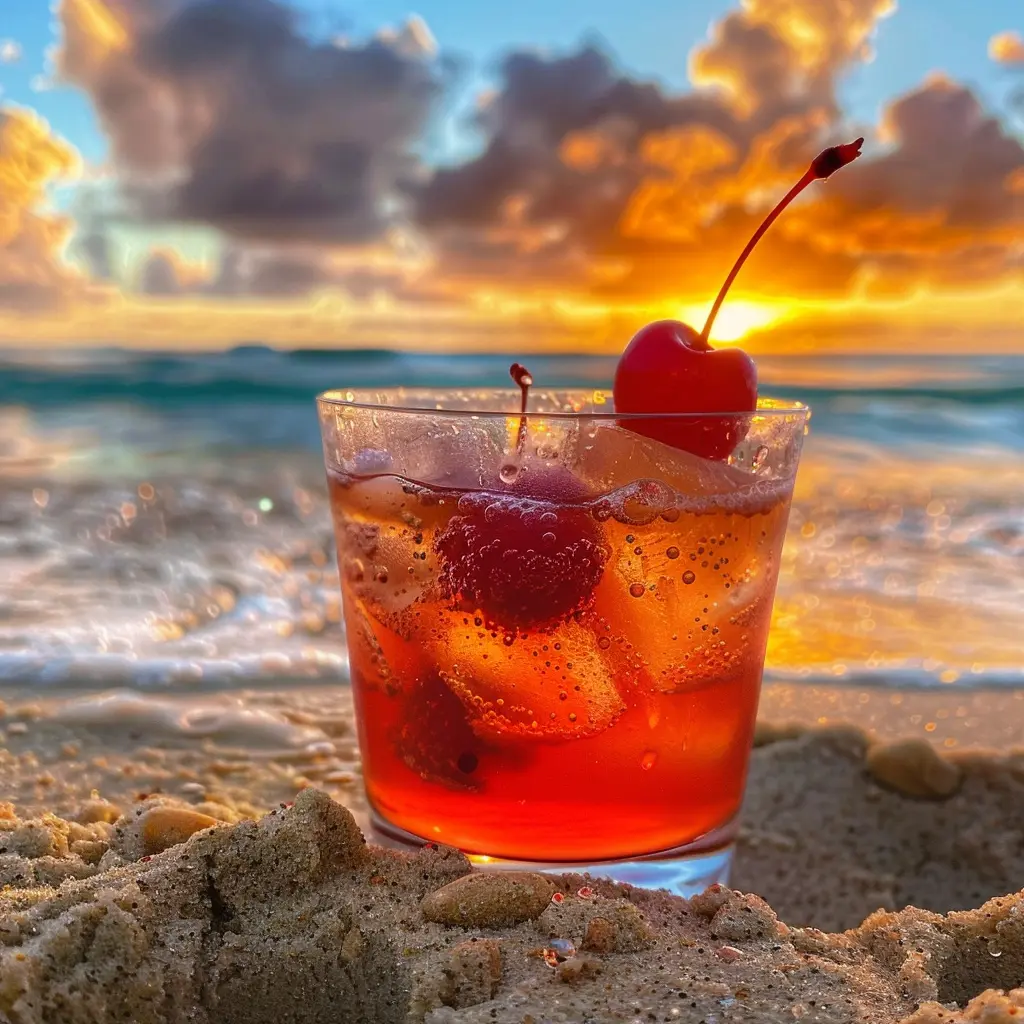Introduction: A Tale of Two Iconic Cocktails
When it comes to classic cocktails, few drinks are as iconic as the daiquiri and the margarita. These two beverages have long been favorites for their refreshing flavors and the way they perfectly capture the essence of summer in a glass. However, while they might appear similar at first glance, they each have distinct characteristics that set them apart.
Whether you’re hosting a party, enjoying a casual evening at home, or simply curious about cocktail culture, understanding the difference between a daiquiri and a margarita can enhance your appreciation of both drinks. In this article, we’ll explore the origins, ingredients, and variations of these two cocktails, highlighting what makes each one unique.
For more cocktail recipes and insights, be sure to check out this collection of classic drinks that every cocktail lover should know.
The Origins: Where Did They Come From?
The Daiquiri: A Cuban Classic
The daiquiri is a simple yet sophisticated cocktail with deep roots in Cuban history. Named after the town of Daiquirí near Santiago de Cuba, this drink was reportedly invented in the early 1900s by an American mining engineer named Jennings Cox. The original daiquiri was a straightforward mix of rum, lime juice, and sugar—a reflection of the abundance of rum and citrus fruits in Cuba.
This cocktail quickly gained popularity and became a favorite of literary greats like Ernest Hemingway. Today, the daiquiri remains a staple in bars worldwide, with countless variations that still adhere to the basic rum-lime-sugar formula.
The Margarita: A Mexican Delight
The margarita, on the other hand, has its origins in Mexico, though its exact history is a bit murkier. One popular theory is that it was created in the 1930s or 1940s by a bartender who mixed tequila, lime, and orange liqueur for a customer who was allergic to all spirits except tequila. Another story attributes the drink to Margarita Sames, a Dallas socialite, who supposedly whipped up the cocktail for friends during a vacation in Acapulco.
Regardless of its origins, the margarita has become synonymous with Mexican culture and cuisine. It’s the go-to drink for celebrating Cinco de Mayo, and its tangy, refreshing flavor has made it a favorite across the globe.
If you’re interested in the history of other famous cocktails, explore these iconic drinks and their backstories.
Ingredients: What’s in the Mix?
Daiquiri Ingredients
The classic daiquiri is renowned for its simplicity. The basic ingredients are:
- Rum: Traditionally white rum, which is light and slightly sweet.
- Lime Juice: Freshly squeezed lime juice is essential for the tart, citrusy flavor.
- Sugar: Often in the form of simple syrup, to balance the acidity of the lime.
These three ingredients are shaken with ice and strained into a chilled glass, typically garnished with a lime wedge.
Margarita Ingredients
The margarita also has a straightforward ingredient list, but with a distinctly different flavor profile:
- Tequila: Silver or blanco tequila is most commonly used, known for its sharp, robust flavor.
- Lime Juice: Like the daiquiri, fresh lime juice is crucial for that signature tang.
- Orange Liqueur: Triple sec, Cointreau, or Grand Marnier are used to add a sweet, citrusy depth.
- Salt: The rim of the glass is usually coated with salt to enhance the flavors.
The margarita is typically served in a glass with a salted rim, either shaken and strained over ice or blended with ice for a frozen version.
Flavor Profiles: How Do They Taste?
Daiquiri Flavor
A daiquiri is all about balance—sweet, sour, and strong all in one sip. The rum brings a subtle sweetness, while the lime juice adds a sharp acidity that’s rounded out by the sugar. The result is a refreshing, crisp drink that’s both light and complex.
There are also many variations of the daiquiri that incorporate fruits like strawberries, bananas, or mangoes, which add their own unique flavors to the cocktail.
Margarita Flavor
The margarita, by contrast, is tangier and more robust, thanks to the tequila. The combination of tequila and lime juice creates a tart, zesty base, while the orange liqueur adds a layer of sweetness that rounds out the drink. The salt rim enhances the flavors by adding a savory note that contrasts with the sweetness of the liqueur.
Frozen margaritas, with their slushy consistency, offer a colder, slightly diluted version of the cocktail, perfect for hot summer days.
Presentation and Serving Style
How Daiquiris Are Served
Daiquiris are typically served straight up in a cocktail glass, often without a garnish or with just a simple lime wheel. The focus is on the purity of the ingredients, and the presentation reflects that simplicity. Some variations, especially fruit daiquiris, might be served in a more casual glass with a slice of the corresponding fruit as a garnish.
Margarita Presentation
Margaritas are often served in a wide, shallow glass known as a margarita glass, with the distinctive salted rim. They can be served on the rocks (over ice) or blended, depending on personal preference. The garnish is usually a lime wedge or wheel, but some variations might include other fruits or even a chili pepper for an extra kick.
Popular Variations: Exploring Different Flavors
Daiquiri Variations
- Strawberry Daiquiri: Blended with fresh strawberries, this version is sweet, fruity, and often enjoyed as a frozen drink.
- Hemingway Daiquiri: Named after the famous author, this variation includes grapefruit juice and maraschino liqueur for a slightly bitter, more complex flavor.
- Banana Daiquiri: Made with ripe bananas, this variation is creamy and tropical, often enjoyed as a dessert cocktail.
Margarita Variations
- Classic Margarita: The standard mix of tequila, lime juice, and triple sec, served on the rocks.
- Frozen Margarita: Blended with ice for a slushy, refreshing version of the classic.
- Spicy Margarita: Infused with jalapeños or chili peppers for a spicy twist on the traditional recipe.
- Fruit Margaritas: Common variations include mango, strawberry, and peach, all of which add a fruity sweetness to the mix.
Table: Daiquiri vs. Margarita Comparison
| Aspect | Daiquiri | Margarita |
|---|---|---|
| Main Spirit | Rum | Tequila |
| Secondary Flavor | Lime Juice | Lime Juice |
| Sweetener | Sugar or Simple Syrup | Orange Liqueur (Triple Sec, Cointreau) |
| Presentation | Straight up in a cocktail glass | On the rocks or blended with a salted rim |
| Popular Variations | Strawberry, Hemingway, Banana | Frozen, Spicy, Fruit (Mango, Strawberry) |
| Typical Garnish | Lime Wedge | Lime Wedge, Salt Rim |
Conclusion: Which One Should You Choose?
When deciding between a daiquiri and a margarita, it ultimately comes down to personal preference. If you enjoy the smooth, slightly sweet flavor of rum paired with citrus, a daiquiri might be your go-to drink. On the other hand, if you prefer the bold, zesty kick of tequila with a touch of sweetness from orange liqueur, a margarita is likely to be more your style.
Both cocktails offer a refreshing escape from the everyday and can be tailored to suit your taste with countless variations. Whether you’re sipping a classic daiquiri at a sophisticated gathering or enjoying a frozen margarita by the pool, you can’t go wrong with either choice.
For more cocktail inspiration and to discover other drinks that match your taste, explore these recipes and find your next favorite drink.
FAQs About Daiquiris and Margaritas
1. Can I Make a Virgin Daiquiri or Margarita?
Yes, you can make non-alcoholic versions of both cocktails by substituting the rum or tequila with a flavored syrup or juice. For a virgin daiquiri, you can use a blend of lime juice, sugar, and club soda. For a virgin margarita, substitute the tequila with a mix of lime juice, orange juice, and a splash of soda water.
2. What Is the Best Glass to Serve These Cocktails In?
A daiquiri is typically served in a standard cocktail glass, while a margarita is best served in a wide, shallow margarita glass. However, feel free to use whatever glassware you have on hand.
3. How Do I Make a Frozen Version of These Cocktails?
To make a frozen daiquiri or margarita, simply blend the ingredients with ice until smooth. You may need to adjust the sweetness or acidity to taste, as the cold can mute flavors.
4. Are Daiquiris and Margaritas Gluten-Free?
Yes, both daiquiris and margaritas are typically gluten-free, as they do not contain any ingredients that naturally have gluten. However, always check the labels on your alcohol and mixers to ensure they are gluten-free.
5. Can I Prepare These Cocktails in Advance?
Both daiquiris and margaritas are best enjoyed fresh, but you can prepare the base mixtures in advance and store them in the refrigerator. Just shake or blend with ice when ready to serve.
By understanding the key differences between daiquiris and margaritas, you can appreciate the unique qualities of each and choose the perfect cocktail for any occasion. Enjoy experimenting with these classics and find the variation that suits your taste best!

